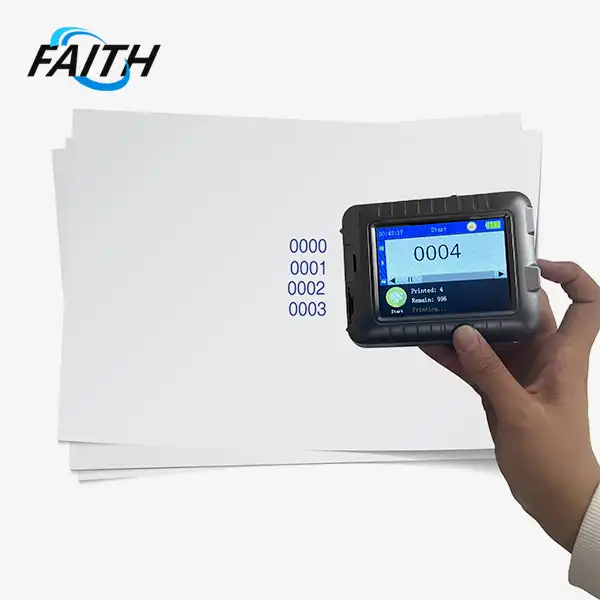What is the advantage of piezo?
Piezoelectric technology offers numerous advantages in the realm of high-resolution printing. The primary benefit of piezo in printing applications is its remarkable precision and versatility. Piezo printheads can produce incredibly fine droplets with exceptional accuracy, resulting in sharper text and more detailed images. This technology allows for superior control over ink deposition, enabling consistent print quality across various materials and surfaces. Additionally, high res piezo printer are highly durable and can handle a wide range of ink types, including UV-curable and solvent-based inks, making them ideal for industrial and commercial printing applications where reliability and flexibility are crucial.
The Evolution of High-Resolution Piezo Printing Technology
The journey of piezo printing technology has been marked by continuous innovation and refinement. From its early days to the cutting-edge high res piezo printers of today, this technology has revolutionized the printing industry. Let's delve into the fascinating evolution of piezo printing and how it has shaped modern printing capabilities.
Origins and Early Developments
Piezoelectric technology in printing was first introduced in the 1970s, but it wasn't until the 1990s that it began to gain significant traction in the commercial printing sector. The early piezo printheads were a game-changer, offering improved precision over thermal inkjet technology. These initial systems laid the groundwork for what would become a cornerstone of high-quality digital printing.
Advancements in Piezo Printhead Design
As research and development in piezoelectric materials progressed, so did the design of piezo printheads. Engineers focused on refining the piezoelectric elements, optimizing their shape and arrangement to achieve finer droplet control. This led to the development of multi-layer actuators and more sophisticated droplet ejection mechanisms, significantly enhancing print resolution and speed.
Integration of Advanced Electronics
The evolution of high res piezo printers has been closely tied to advancements in electronics. Modern piezo printheads incorporate sophisticated microelectronics that allow for precise control of each nozzle. This level of control enables variable droplet sizes, further improving image quality and ink efficiency. The integration of advanced waveform generation and real-time feedback systems has pushed the boundaries of what's possible in digital printing.
Exploring the Unique Capabilities of High-Resolution Piezo Printers
High res piezo printers have emerged as powerhouses in the printing industry, offering a suite of capabilities that set them apart from other printing technologies. These advanced machines leverage the unique properties of piezoelectric materials to deliver unparalleled print quality and versatility.
Exceptional Print Resolution and Detail
One of the standout features of faith printer like high res piezo printers is their ability to produce exceptionally fine details. The piezoelectric printheads can generate droplets as small as 1 picoliter, allowing for the reproduction of intricate patterns and sharp text even at very small sizes. This level of detail is particularly valuable in industries such as electronics manufacturing, where precise printing of circuit boards and components is essential.
Versatility in Ink and Substrate Compatibility
High res piezo printers excel in their ability to work with a wide range of inks and substrates. Unlike thermal inkjet systems, piezo printheads don't heat the ink, which means they can handle heat-sensitive formulations and specialty inks. This versatility extends to the substrates as well, with piezo printers capable of printing on diverse materials including paper, plastics, textiles, and even glass and metal surfaces. This flexibility makes high res piezo printers invaluable in industries ranging from packaging to textile printing.
Precision Droplet Placement and Variable Droplet Sizes
The precise control offered by piezoelectric technology allows for exact droplet placement and the ability to vary droplet sizes within a single print job. This capability enables smooth gradients, vibrant colors, and improved overall image quality. In industrial applications, such as the production of printed electronics, this precision is crucial for ensuring the functionality and reliability of the final product.
Industrial Applications and Future Prospects of Piezo Printing Technology
The impact of high res piezo printers extends far beyond traditional printing applications. These versatile machines have found their way into various industrial sectors, revolutionizing production processes and opening up new possibilities for customization and innovation.
Piezo Printing in Manufacturing and Quality Control
In manufacturing, high res piezo printers have become indispensable tools for product marking and traceability. The ability to print high-quality, durable codes and markings on a variety of surfaces ensures that products can be tracked throughout their lifecycle. This is particularly crucial in industries such as automotive and aerospace, where component traceability is essential for safety and quality assurance.
Advancements in Functional and 3D Printing
The precision of piezo printing technology has paved the way for exciting developments in functional printing. Researchers are exploring the use of high res piezo printers to create printed electronics, sensors, and even biomedical devices. The ability to deposit precise amounts of specialized inks or materials opens up possibilities for printing complex, multi-layered structures with specific functional properties.
Sustainability and Eco-Friendly Printing Solutions
As environmental concerns become increasingly important, high res piezo printers are at the forefront of developing more sustainable printing solutions. The precise droplet control of piezo technology results in less ink waste and more efficient use of resources. Additionally, the compatibility with eco-friendly ink formulations, such as water-based and UV-curable inks, positions piezo printing as a key player in the movement towards greener printing practices.
Conclusion
High res piezo printers represent a significant leap forward in printing technology, offering unparalleled precision, versatility, and quality across a wide range of applications. From their ability to produce exceptionally fine details to their compatibility with various inks and substrates, these printers have become indispensable tools in industries ranging from packaging to electronics manufacturing. As piezo printing technology continues to evolve, we can expect to see even more innovative applications and improvements in print quality and efficiency.
For businesses looking to leverage the advantages of high-resolution piezo printing, partnering with experts in the field is crucial. If you're interested in exploring how piezo printing solutions can benefit your operations, don't hesitate to reach out to us at sale01@sy-faith.com for personalized advice and cutting-edge solutions.
References
1. Hutchings, I. M., & Martin, G. D. (2018). Inkjet Technology for Digital Fabrication. John Wiley & Sons.
2. Zapka, W. (Ed.). (2017). Handbook of Industrial Inkjet Printing: A Full System Approach. Wiley-VCH.
3. Hoath, S. D. (Ed.). (2016). Fundamentals of Inkjet Printing: The Science of Inkjet and Droplets. Wiley-VCH.
4. Magdassi, S. (Ed.). (2019). Nanomaterials for 2D and 3D Printing. Wiley-VCH.
5. Kipphan, H. (Ed.). (2001). Handbook of Print Media: Technologies and Production Methods. Springer Science & Business Media.
Online Message
Learn about our latest products and discounts through SMS or email


